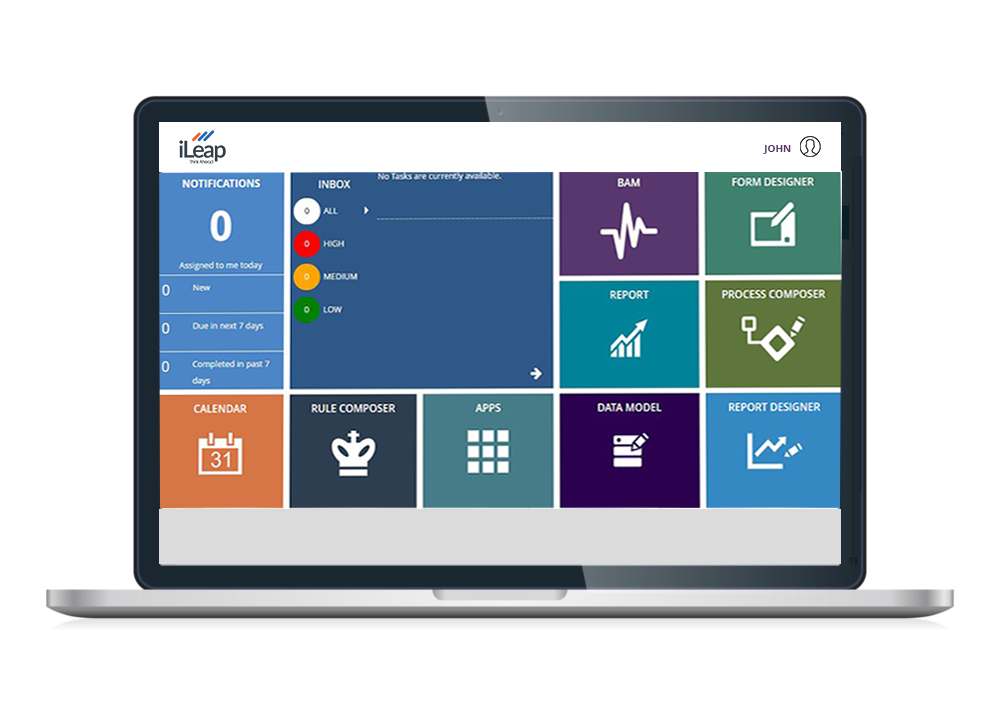Top News On Selecting Low-Code Platform Info
Top News On Selecting Low-Code Platform Info
Blog Article
Benefits Of Low-Code Application Development For Non-Developers
Low-code apps improve accessibility by non-developers (often referred to as "citizen-developers") because of a few key factors.
Drag-and-Drop Builders: Low-code systems have drag-and-drop interfaces, which allow people who are not developers, and without the need to write code, to develop visual applications. This makes development more accessible to those without technical background.
WYSIWYG editor: The "What you see is the result you will get" editors allow users to create interfaces, workflows and other features in a way that is similar to the final product. They are easy to learn and make use of.
Simplified Workflow and Logic Design:
Visual Workflow modeling: Users design business flows and application logic with visual flowcharts. The models are easier to work with than traditional codes.
Pre-built Logical Components: A lot of low-code programs come with pre-built components for logic (e.g. conditions, loops), that are easily configurable. This eliminates the requirement to write complex programs.
Templates and components that are reuseable:
Library of pre-built templates Numerous low-code platforms have a library of templates for common applications, enabling non-developers to start from a solid base and customize as needed.
Reusable Widgets and Modules Users can leverage modular and reusable widgets, streamlining the creation process and eliminating the need for in-depth technical knowledge.
Guided Development and Tutorials
Step-by step guides: Platforms offer tutorials, tips and tricks on the screen and guided development paths to assist non-developers in creating applications.
Interactive Tutorials. Interactive, hands on tutorials enable users to gain knowledge by doing.
Integration with Existing Tools:
Seamless Integration: Low-code platforms are designed to integrate easily with the existing business tools and systems (e.g. CRM, ERP and ERP) which allows non-developers to create applications that work within their current workflows.
APIs and Connectors : APIs integrated into connectors and APIs enable users and non-developers to connect applications to external services, without the need to write complex programming.
Collaboration Features:
Team Collaboration: Real-time collaboration, shared workspaces and shared workspaces permit business analysts, non-developers and other users to efficiently collaborate with developers who are professionals.
Access Control Based on Roles: Non-developers can be assigned roles and access levels that permit users to contribute, without compromising security or functionality.
Automated Debugging and Testing:
Low-code platforms have tools to test and debug that are built-in. They automatize this process, making it simpler for non-developers to ensure that their apps work.
Error Highlighting: When issues arise the platform flags mistakes and suggests solutions by guiding non-developers through troubleshooting steps.
Overall, the benefit of developing applications using low-code in terms of accessibility to non-developers is in its ability to make development more accessible. Through providing clear, intuitive tools and guided experiences low-code applications allow users of business to be actively involved in the creation and maintaining apps, thus bridging the gap between business needs and technical implementation. Read the top rated Low-code Platform for application development for website tips including mobile app development platforms, app modernisation, multiplatform mobile app development, multiplatform mobile app development, cross platform mobile app development, lowcode no code, database in azure, develop web application, app development platform, rad development and more.
Low-Code Application Development Offers Numerous Benefits, Particularly In Terms Of Cost-Effectiveness
Low-code development can bring many benefits in terms of cost effectiveness. This makes it an ideal choice for companies looking to reduce their development budgets while still providing top quality software. Here are some of the major advantages:
Lower Coding Requirements Low-code platforms reduce the need for extensive hand-coding, reducing the time and effort that developers need to invest in developing their applications. This translates into lower labor costs.
A smaller number of developer resources: As low-code development is quicker and easier, fewer developers are needed. This will drastically lower costs for hiring and staffing.
More Time to Market
Accelerated Development: Low-code platforms include visual development tools, pre-built components and other capabilities that facilitate rapid development of applications. Companies can launch their products on the market much faster. This will result in faster revenues and better position in the marketplace.
Rapid Prototyping. Businesses can rapidly test and build prototypes. This cuts down time during the development phase and allows for faster iterations that are based on feedback from users.
Reduced Maintenance Costs
Simplified Maintenance: Applications built on low-code platforms tend to be more simple to maintain due to their standardized components and modular architecture. This reduces the cost of maintenance on a regular basis.
Automated Updates: A lot of low-code software platforms manage patches and updates in a way that is automatic, ensuring applications remain secure and up-to date without needing lengthy manual intervention.
Efficient Resource Utilization:
Contributions by Non-Developers Low-code platforms enable non-developers and business users to be involved in the process of developing. This makes it possible for companies to benefit from the talents of a diverse range of employees.
Utilizing IT resources efficiently: IT teams can concentrate on strategic initiatives instead of being stymied by routine development tasks, increasing the efficiency of their teams and productivity overall.
Modular Pricing Models that Scale:
Subscription-Based Pricing: A lot of low-code platforms have flexible pricing based on subscriptions that can scale with usage. This enables businesses to align their expenditure with their real needs and growth.
Pay-Assosiated Options: Some platforms offer pay-assosiated alternatives. These ensure that businesses pay only for the resources utilized, which is beneficial to entrepreneurs and small businesses that have limited resources.
Reduction in Third-Party Software Fees:
Built-in Functionalities: Low-code platforms typically come with built-in functions and integrations that eliminate the need for additional third-party tools and software, resulting in cost savings on software licensing and subscription costs.
Pre-Built Integrates: By integrating popular services and systems, you can save time and money by not having the need to develop custom integrations.
More ROI
A faster return on investment: Rapid development and lower expenses with a faster time to marketing can help businesses get more return on their investment.
Improved agility: Companies can adapt quickly to changes on the market or to customer demands, which allows businesses to stay relevant and take advantage of new opportunities.
Low-cost Training:
User-friendly interfaces: Low-code systems have intuitive and user friendly interfaces that reduce the time required to learn. They also eliminate the requirement for lengthy learning programs.
Accessible Resources that are accessible. A lot of low-code platforms offer comprehensive training material and tutorials as well as community assistance. They make it less necessary for formal education, which can be expensive.
Collaboration Streamlined:
Enhanced Collaboration Tools : The collaboration tools built-in to the software facilitate collaboration and communication between the team members. This leads to an efficient development process as well as lower costs.
Unified Development Environment. An unified development platform helps reduce costs and streamline workflows through reducing the complexities of managing multiple tools.
The overall cost-effectiveness of low-code software development can be attributed to its ability to cut down on the cost of maintenance and development as well as increase the time to market and optimize the use of resources and offer flexible pricing models. Low-code can provide significant financial benefits to businesses. Check out the recommended website about Enterprise application development with Low-code Platform for more recommendations including rapid applications, build a docker container, cross platform mobile development, application modernisation, push alerts, rad application development, develop web app, build with docker, develop mobile application, develop cross platform mobile app and more.
The Benefits Of Low-Code Development For The Development Of Applications In Terms Of Restrictions And The Possibility Of Customization
Low-code applications are a flexible, balanced approach that takes into account the limitations of the system and allows for customization. Here are the key benefits:Handling limitations:
In overcoming Complexity Barriers:
Simple Development: Low-code platforms minimize complexity by providing templates and components that are pre-built that allow for quicker development and deployment for more complex applications.
Many platforms feature automated workflows that help developers navigate through complicated procedures. They minimize the risk of making mistakes and help maintain consistency.
Scalability Solutions
Scalability Built-In Lowcode platforms usually have features to support an scalable architecture. They permit applications to handle increasing loads without major redevelopment.
Performance Monitoring: The integrated tools for monitoring performance and optimization ensure that applications are efficient when they grow.
Security and Compliance
Low-code platforms have built-in security options, such as security access control that is based on roles as well as encryption and automated checks to ensure conformity. These security features address most common security concerns.
Platforms are constantly changing their security procedures as well as measures of conformity, which assures that the applications are secure against new threats.
Customization:
Extensibility:
Custom Code Integration: Low-code platforms typically permit the integration of custom codes (e.g., JavaScript, Python) that allows developers to enhance the functionality beyond what is available in the standard features.
Developers are able to add customized modules or plugins to meet specific business needs.
APIs and Integration
API Support: A full API support is available to enable seamless integration and communication with other systems.
Third-Party services: Low-code platforms offer connectors that are built for popular third party services. This makes it easier to modify and integrate apps.
Flexible Design for UI/UX
User-friendly interfaces with customizable options: Users can modify and create their own user interfaces, which will provide users with a customized experience.
Responsive Design: The built-in capabilities of responsive design make sure that apps can be tailored to various screen sizes and devices.
Custom Business Logic:
Visual Workflow Builds Visual tools allow for the customization of workflows as well as business rules and to design complex customized processes.
Conditional Logic & Scripting: Platforms allow the application of conditional logic and custom scripting to manage particular business rules.
Data Management
Custom Data Models: Developers have the option to develop custom data models specifically for particular applications, adjusting data handling to the specific requirements of business.
Advanced Data Processor: The combination of sophisticated data processing tools and capabilities permits the customisation of the method by which data is analysed and used within the application.
Customisation and balancing limits:
Frameworks and Standards:
Low-code platforms encourage industry best Practices and Standards: Low code platforms encourage adherence to industry best standards and practices. This helps to maintain high-quality, secure, and adaptable applications.
Governance Frameworks - Built-in governance structures ensure that customisations do not compromise security, integrity or adherence.
Iterative Development:
Rapid prototyping: By being capable of rapidly prototyping and test modifications developers can iterate on feedback from users to improve the application.
Continuous Improvement: Platforms with low-code support for continuous improvement which allow for customization and improvement as business needs evolve.
User Empowerment
Empowering Citizen-Developers: Low-code platforms increase the number of developers who are capable of improving and customizing applications, by giving them the ability to modify their applications through an intuitive user interface.
Training and Support: Many platforms offer a wealth of training and support to assist users to make effective modifications without compromising stability or performance.
Overall, low-code application development offers a robust system for dealing with limitations, as well as a wealth of opportunities to personalize. This balance enables businesses to build and maintain apps that function, are tailored to meet their needs, and that meet high standards in terms of security, quality, and scaling.